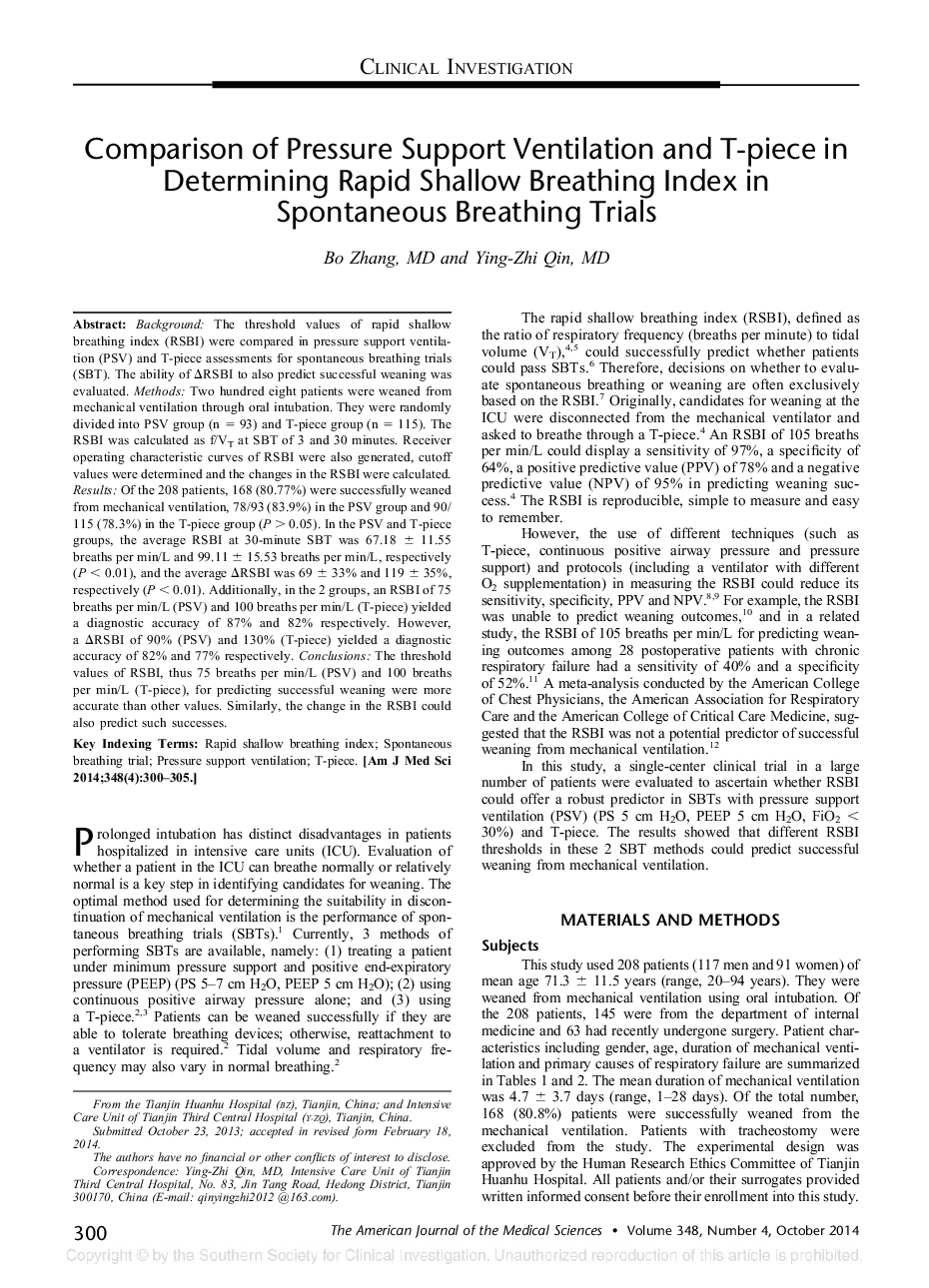| Article ID | Journal | Published Year | Pages | File Type |
|---|---|---|---|---|
| 2863410 | The American Journal of the Medical Sciences | 2014 | 6 Pages |
BackgroundThe threshold values of rapid shallow breathing index (RSBI) were compared in pressure support ventilation (PSV) and T-piece assessments for spontaneous breathing trials (SBT). The ability of DRSBI to also predict successful weaning was evaluated.MethodsTwo hundred eight patients were weaned from mechanical ventilation through oral intubation. They were randomly divided into PSV group (n = 93) and T-piece group (n = 115). The RSBI was calculated as f/VT at SBT of 3 and 30 minutes. Receiver operating characteristic curves of RSBI were also generated, cutoff values were determined and the changes in the RSBI were calculated.ResultsOf the 208 patients, 168 (80.77%) were successfully weaned from mechanical ventilation, 78/93 (83.9%) in the PSV group and 90/ 115 (78.3%) in the T-piece group (P > 0.05). In the PSV and T-piece groups, the average RSBI at 30-minute SBT was 67.18 ± 11.55 breaths per min/L and 99.11 ± 15.53 breaths per min/L, respectively (P < 0.01), and the average DRSBI was 69 ± 33% and 119 ± 35%, respectively (P < 0.01). Additionally, in the 2 groups, an RSBI of 75 breaths per min/L (PSV) and 100 breaths per min/L (T-piece) yielded a diagnostic accuracy of 87% and 82% respectively. However, a DRSBI of 90% (PSV) and 130% (T-piece) yielded a diagnostic accuracy of 82% and 77% respectively.ConclusionsThe threshold values of RSBI, thus 75 breaths per min/L (PSV) and 100 breaths per min/L (T-piece), for predicting successful weaning were more accurate than other values. Similarly, the change in the RSBI could also predict such successes.
